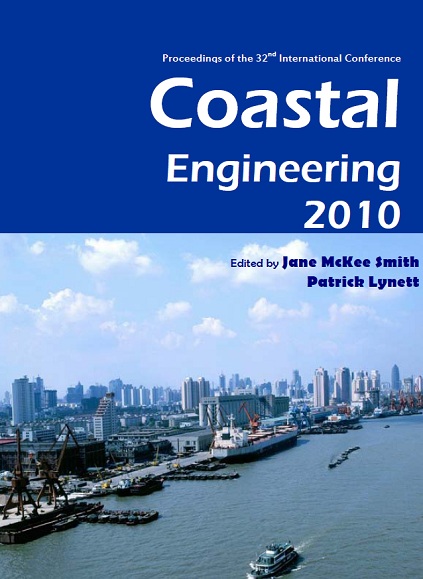Abstract
HF Oceanographic radar is an equipment, for instantaneously sensing velocity distribution of sea surface current. It has a wide field of view, which extends approximately ±45° in direction and beyond 50km in distance. There are high expectations that the radar observation of Tsunami will become a new road path for preventing disasters. In this paper, we describe a method to enhance the resolutions of radar in both time and current. At first, resolutions required for tsunami observation are estimated by simulating a Tokachi-oki earthquake tsunami (2003). Here it is pointed out that traditional data processing indicates inadequate resolutions for tsunami early detection. Secondly, two techniques are proposed to achieve the necessary resolutions. Short-time Fourier transform (STFT), in place of normal FFT, enhances the time resolution of Doppler analysis. Further, zero-padding technique improves the current resolution, by interpolation of data within the frequency domain. Finally, by means of simulation, it is verified that these proposed techniques give improved resolutions in both time and current.References
Barrick, D.E. 1979. A Coastal Radar System for Tsunami Warning, Remote Sensing of Environment, Vol.8, 353-358.http://dx.doi.org/10.1016/0034-4257(79)90034-8
Izumiya, T. and T. Imai. 2005. Real-Time Tsunami Prediction Using Surface Current Velocities Retrieved by HF Ocean Radar, Annual Journal of Coastal Engineering, Vol.52, 246-250.
Izumiya, T. and T. Nakajima. 2006. Real-Time Prediction of Tsunami Using a Time-Averaged Surface Current, Annual Journal of Coastal Engineering, Vol.53, 246-250.
Japan Society of Civil Engineers. 2001. Coastal Marine Observation by Land-Based Radar, Japan Society of Civil Engineers, 212pp.
Mansinha, L. and D.E, Smylie. 1971. The displacement fields of inclined faults, Bulletin of the Seismological Society of America, Vol.61, No. 5, 1433-1440.
Tanioka, Y., K. Hirata, R. Hino, and T. Kanazawa. 2004. Slip distribution of the 2003 Tokachi-oki earthquake estimated from the tsunami waveform inversion, Earth, Planets and Space, Vol.56, 373-376.
Watanabe, K. and T.Tomita, 2007. Study of Method to Remove Wind Current Component toward Materialization of Tsunami Observation by Ocean HF Radar, Annual Journal of Civil Engineering in the Ocean, Vol.23, 1129-1134.http://dx.doi.org/10.2208/prooe.23.1129

